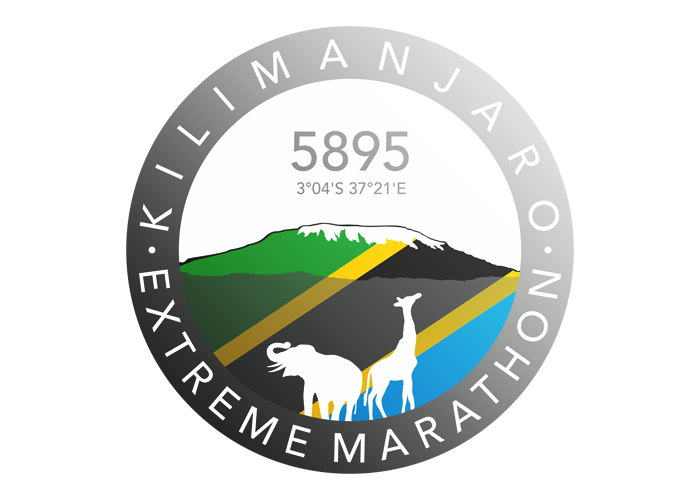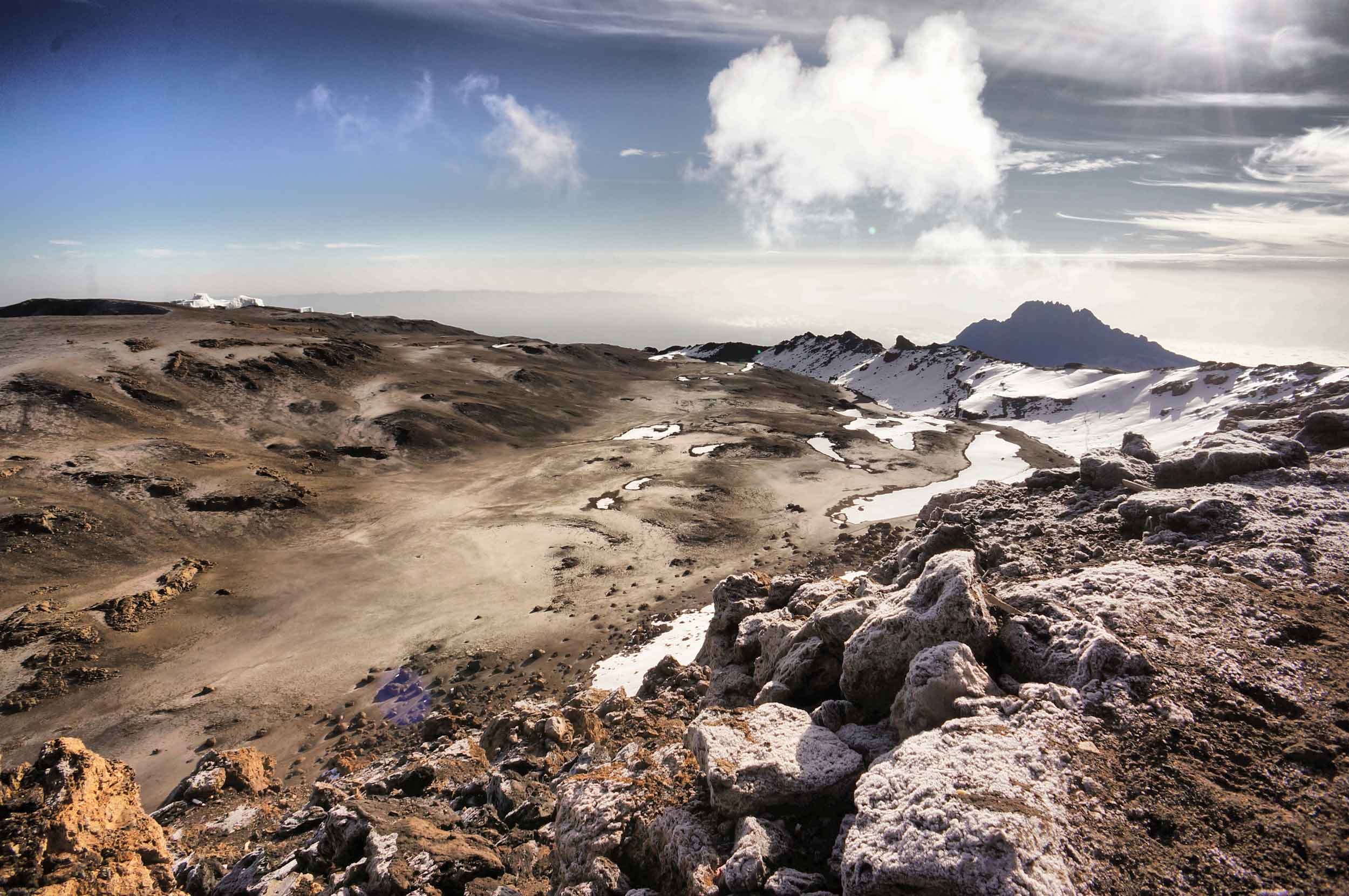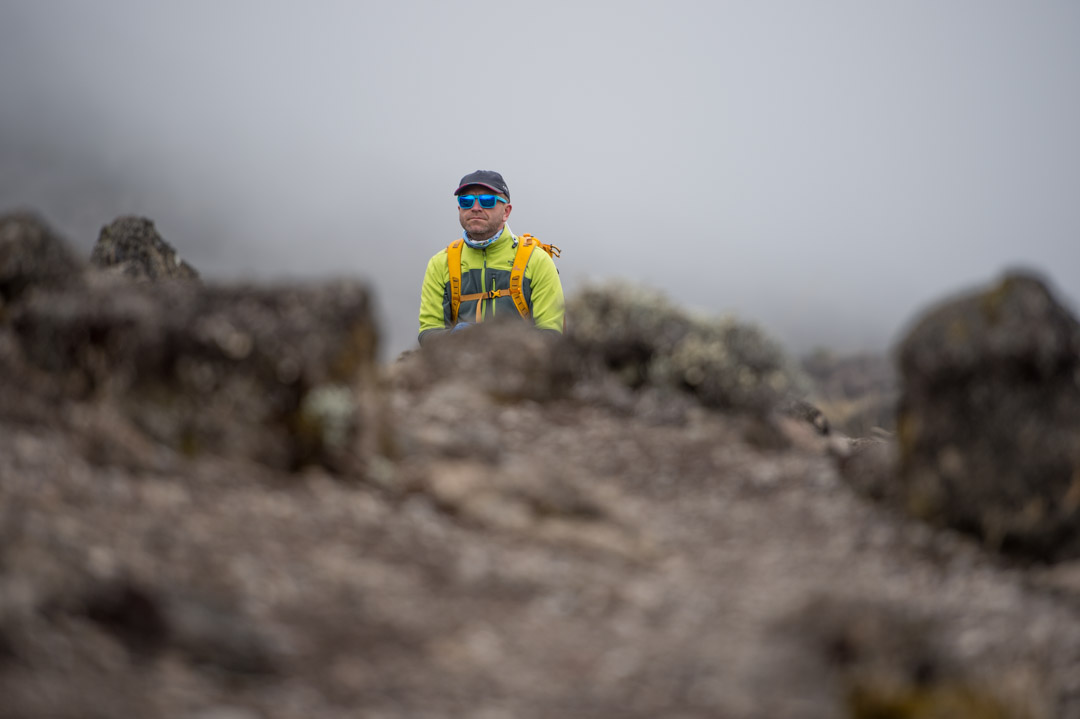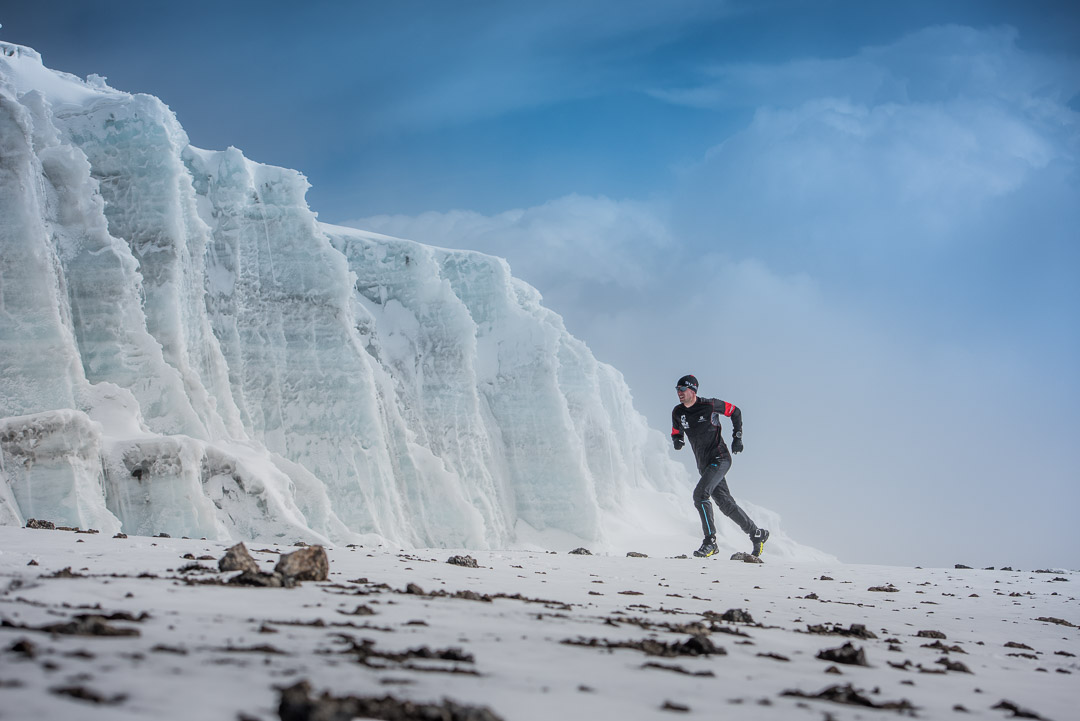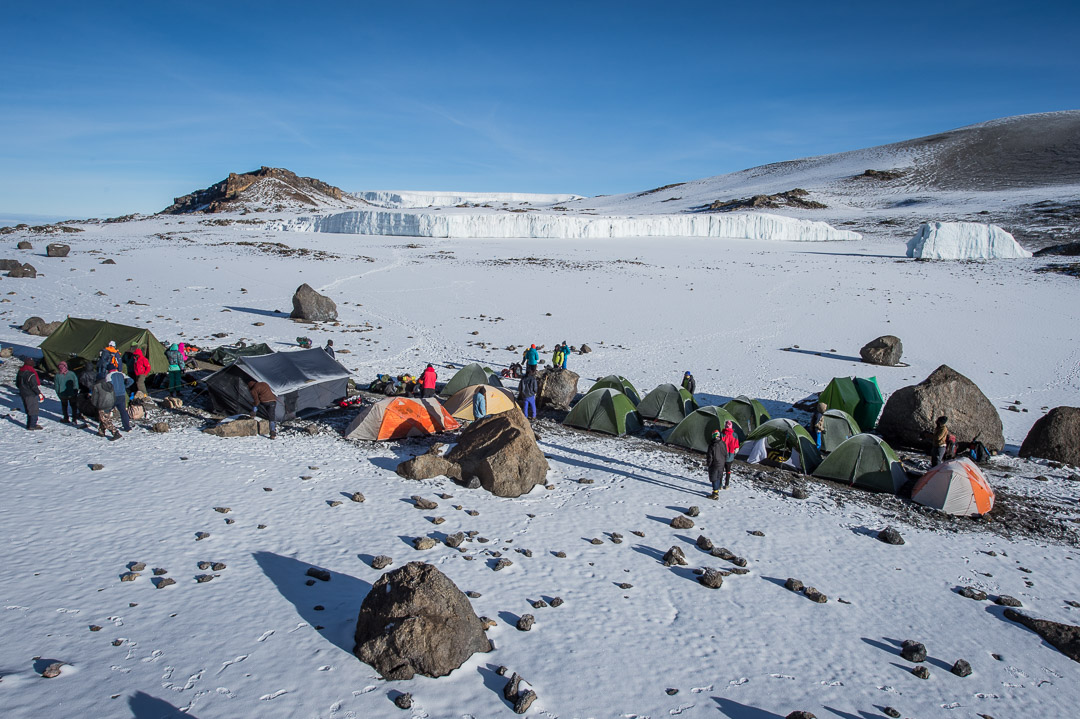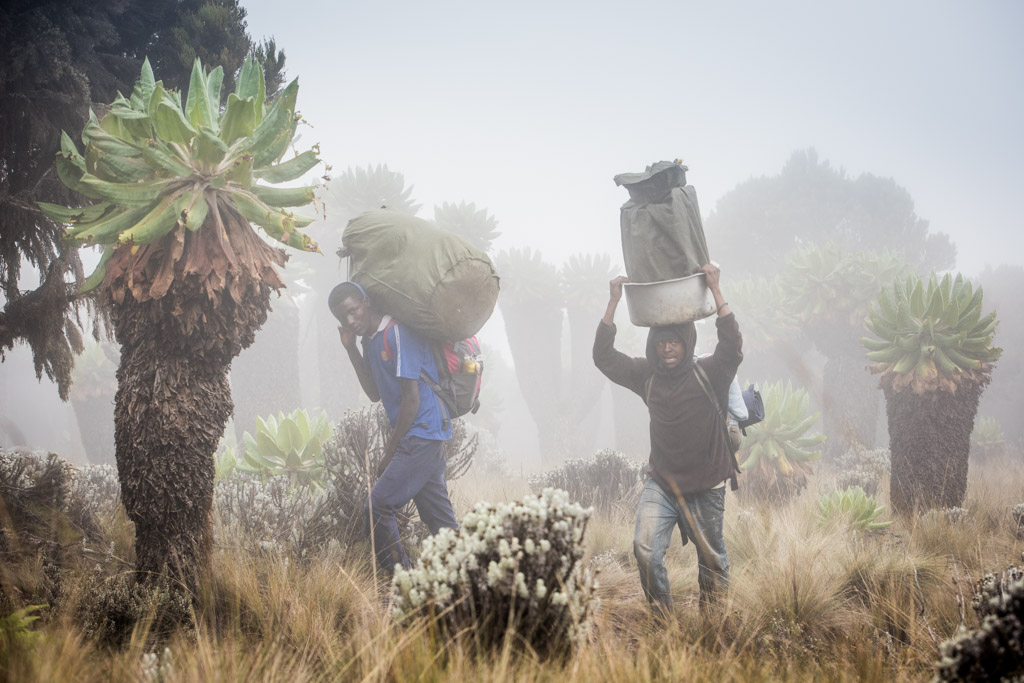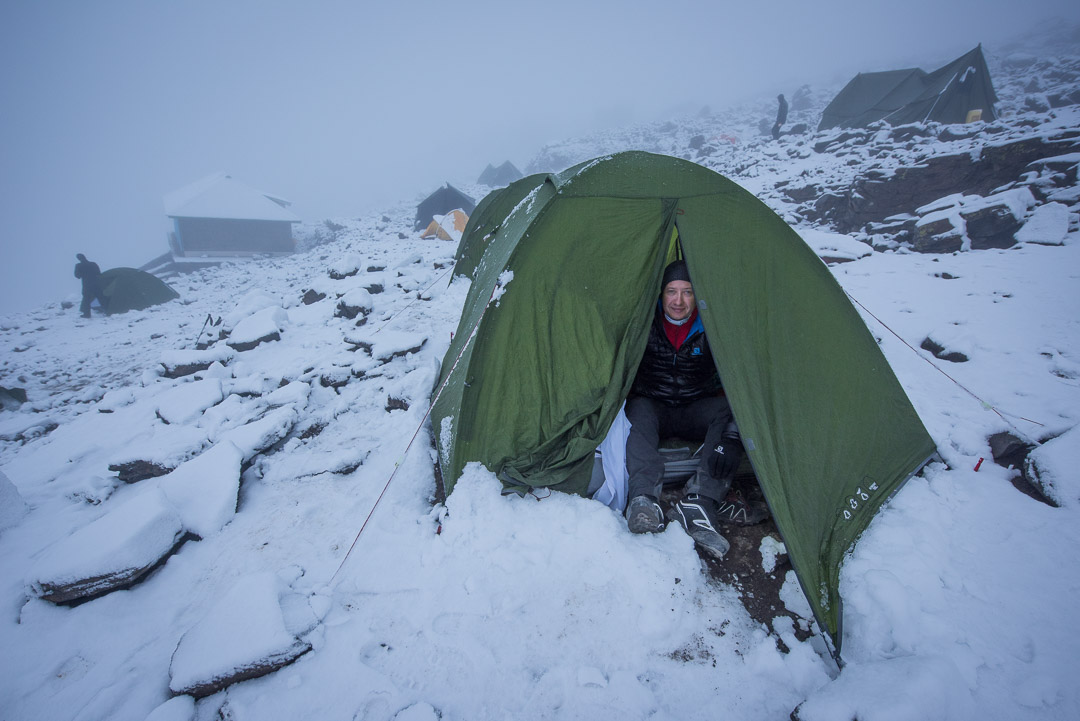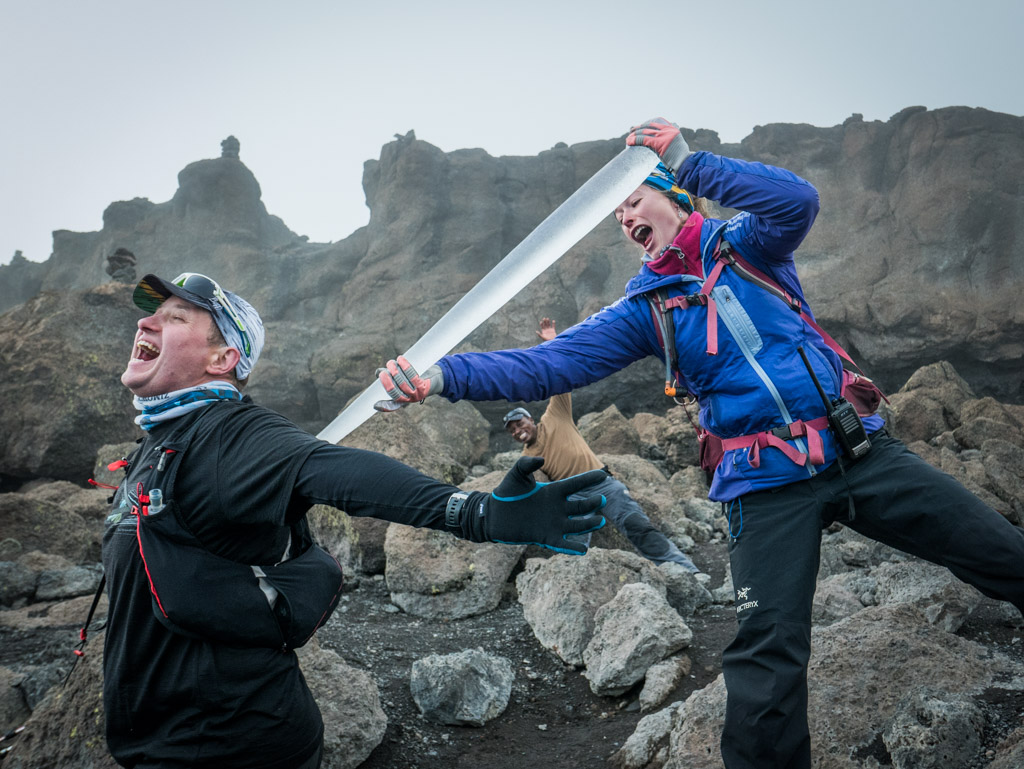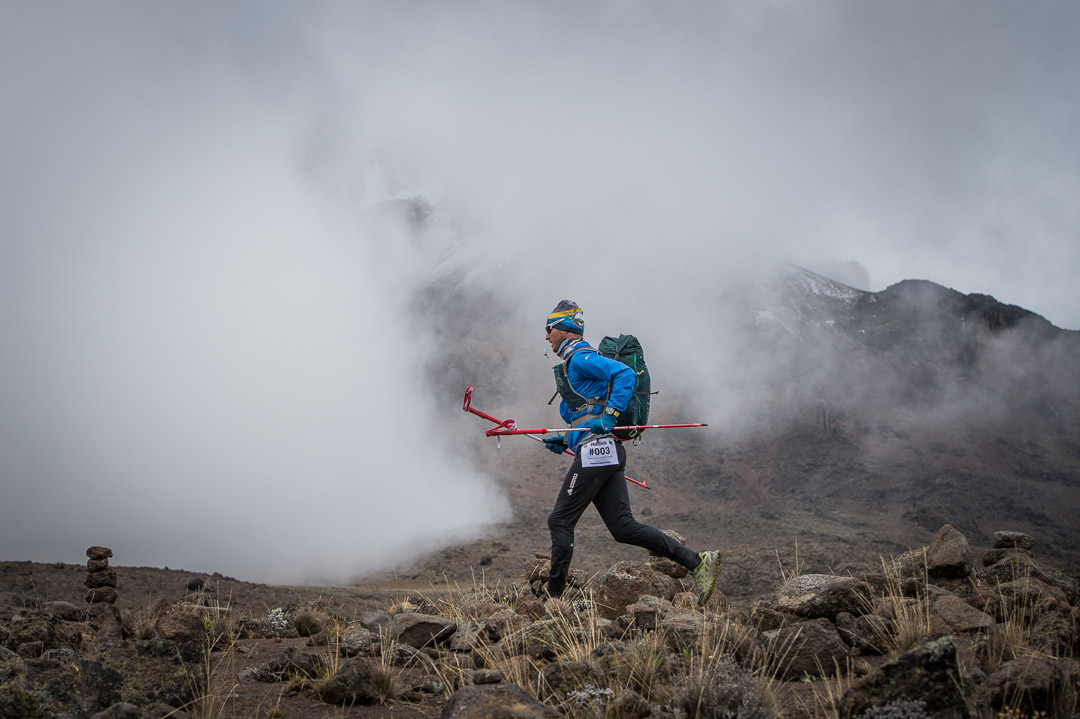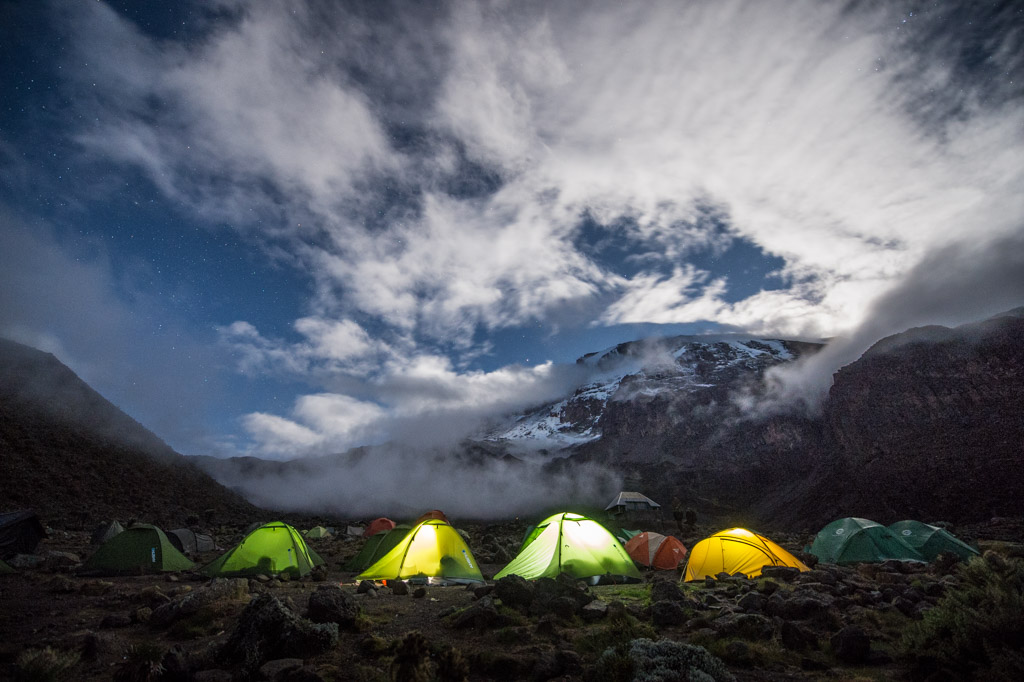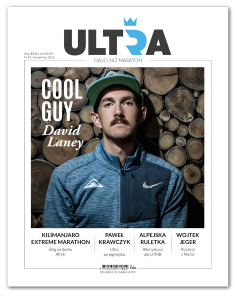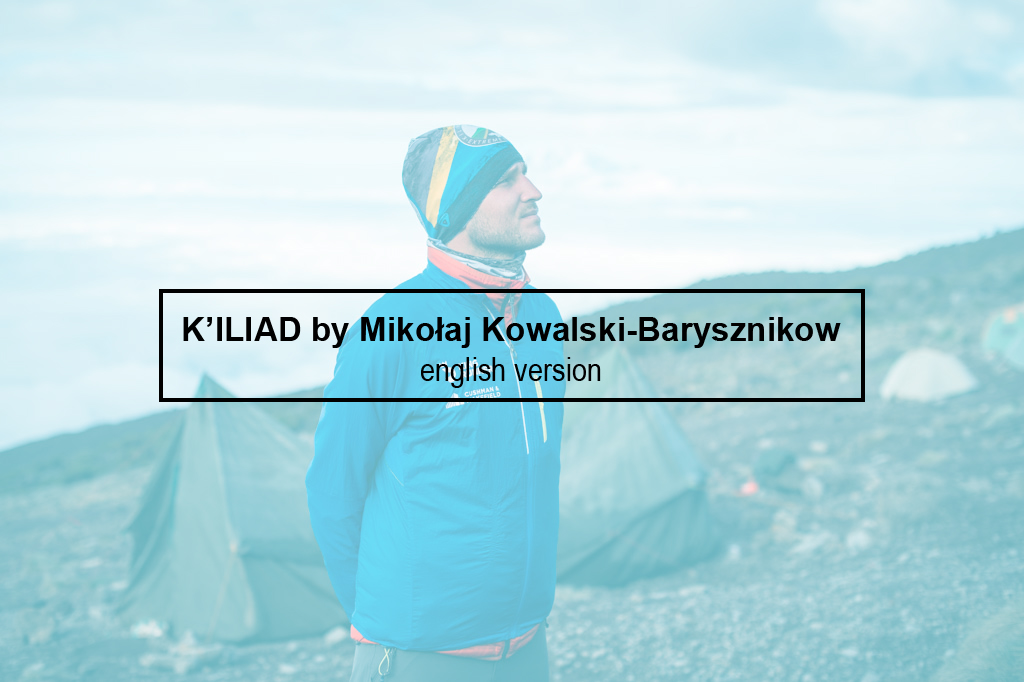
K’ILIAD [english] – Mikołaj Kowalski-Barysznikow
It was supposed to be an adventure of a lifetime. And it was. But not exactly the one I had imagined. I disregarded her Majesty Kilimanjaro and I merely escaped the fate of staying on the Roof of Africa forever. I’m neither Odysseus nor Achilles, but it turned out that participation in the Kilimanjaro Extreme Marathon for me was like combination of the Iliad and Odyssey. A private drama in a single act!
text: Mikołaj Kowalski-Barysznikow
photos: Piotr Dymus
Prologue
The guy is a developer. He builds large shopping centres and other stuff. He has a head for business. Everything he touches turns into gold. Has he ever failed in something? Probably yes, but he never talks about it. He’s a conqueror, and a conqueror never excuses himself, he just turns them into victories. When a few years ago he came up against a brick wall, he wasn’t shaken – he just reduced it to rubbles. He sold his company and started living a full life. Since then, he was spending most of his spare time sailing with his buddies over faraway seas and oceans, and after coming ashore – he run. Further and higher. After completing several ultramarathons he still wanted more until eventually his legs took him to the mighty Everest. It wasn’t possible to run on higher ground than in that place. At least officially. And it was there, at the finish of Tenzing Everest Marathon, where this story began. Michał Gawron decided that 5356 m a.s.l. was not enough. He wanted to check if it was possible to run even higher!
Hercog
A rascal from Częstochowa. Despite being over 40, he’s still up to mischief. At least high in the mountains, because at home it’s a different matter – a good husband and caring father of two kids, he’s just about to complete building his dreamed house in Kudowa. Piotr Hercog is a big bundle of mischief, but he doesn’t look like one. He’s rather inconspicuous, calm, and doesn’t talk too much when not asked. But after he gets rolling, we have a ready adventure film scenario. Of course with him as a leading actor. Indiana Jones of trail running? A kind of, but the difference is that Indiana was rather attracted to warm climate and going underground, while Hercog prefers open space, altitude and chill. Kilimanjaro is his perfect world, the higher the better. Herc is a great companion on trail – his stories kill the monotony of painstaking climb. His flight from border patrolmen in faraway Tajikistan or Turkmenistan is nothing. Add to this his leg in a cast and two crutches on which he “run”. And now imagine Piotr fleeing on snowy railway from serviceman in one of some post-Soviet state and you’re in a better mood, aren’t you? He told us many similar stories which were sometimes funny and sometimes scary – thanks to them the meters quickly changed into altitude. Calling Piotr the favourite of Kilithon wasn’t enough – he just had to win. Because in the premiere edition of the Kilimanjaro Extreme Marathon he competed with just a bunch of amateurs. So his only task was to just reach the finish line without any scratches. Yet he felt respect for the big, white mountains and we could sense it – even during trekking he didn’t press too much, carefully placed his feet, and both in the morning and evening didn’t say no when Ewa Piekarska and Ania Gregorczyk from the Polish Medical Mission served him acetazolamide. Maybe a rascal he is but he keeps his feet on the ground. There was no sensation – after 4 hours 28 minutes and 40 seconds from the start on Kilimanjaro Piotr Hercog reached the Kilithon’s finish line, making another big step under his Hercog Mountain Challenge project.
PMM.ORG.PL
“Mike, you’ve got altitude sickness, I must give you oxygen” – I vaguely remember Ania’s words, it was like someone made them in a bad-quality audio editing software. I see also blurred images running in my brain which at the night of 8 to 9 December 2017 started swelling like a sponge. And it functioned like a sponge. My command centre was like a jelly. And my whole body was like a jelly. I was shivering with cold and my voice shivered. My thoughts were shivering. Actually the whole world seemed to shiver. I hallucinated and I kept repeating three things:
– My name’s Nicholas.
– Who’s that red jacket?
– Can I start tomorrow?
I kept saying these things in different configurations whether I was asked any questions or not. Rafał Kruzel, my tent neighbour, later told me that I was delirious and confused breakfast with supper, today with tomorrow, and I was in a mess. Why was I talking about a red jacket? After ascending from Kilimanjaro to the Crater Camp it turned out that carriers had failed to bring my large rucksack on time. The sun was shining beautifully, wind silenced, and from my tent I had a view on the glacier – yes, the one that disappears so quickly and soon will be gone. I felt blissfully relaxed. I took off my wet socks, wrapped my feet in warm trousers, sit down and…drifted away. Hypothermia hit me instantly – in just 5, maybe 10, minutes I was gone. I was on a highway to AMS that is Acute Mountain Sickness. In some point somebody covered me with a red jacked. And later, after I regained my body warmth (and sleeping bag), flashes of consciousness kept telling me that if I had someone’s red jacket, it meant that somebody was surely feeling cold. My natural – ha-ha! – altruism kept telling me to give it back. The funnies thing is that when writing these words I’m not certain if the red jacket existed at all…
The decisive stroke of the illness came just after nightfall – I was lying still, powerless and without consciousness. A debate was held over my body “Should we take him down now or in the morning”, but I heard nothing. I just remember an oxygen mask on my face and a pleasant voice of Anna, my guardian angel. And then I was just sleeping. I think I had the calmest – and most pleasant – night from all who were in the camp at that time. I was lying in a warm sleeping bag between two girls, and my lungs were being filled with oxygen. Lots of oxygen.
“No way!”, Ania said in a commanding tone, when after the night spent in the tent of the Polish Medical Mission I was trying to negotiate another climb to the summit with the rest of runners. No more than over 100 m of altitude difference between our base and the Kilimanjaro summit could be a death march to me. Despite taking two full oxygen cylinders, indicator on a heart rate monitor barely exceeded “50”, which still meant a serious threat to my life. My entire weekly acclimatization was gone within several hours. Clouds disappeared, the sky cleared, and I was feeling like a beaten dog.
If I had longer ears, I would flatten them and whine sadly. The “sponge” knew that there was no point taking the risk, but my heart yearned for the mountain top. After all, I arrived not to lie still but to run the race with others. “Come Miki”, a voice of Maciek, author of the video from the trip, broke my contemplation, and together with Iwona and Dymek we struggled in the direction of Stella Pass. “But maybe we should go to the start?”, I thought aloud after we reached the last pass before Uhuru Peak (5895 m above sea level). “No way! You’re going down!” – I’ve never seen Piotr Dymus being so adamant. Even now I’m not sure If I wouldn’t try to reach the Kili’s summit if not by “Dymek”. I that case my only companions on the trail would be: anoxic bloodstream and sick ambition. On my way I would be probably humming Stairway to heaven…
Jumbo Bwana
Which means Hello, as was sung by Adele, Lionel Ritchie and U2. Nothing reminds me more of Africa, Kili and with that trip than this beautiful, cheerful song sung by our carriers and guides on many occasions. My brain-sponge wasn’t able to learn the lyrics when I was on the Roof of Africa, but I learned them quickly after coming back home. The refrain is the easiest (and the most beautiful):
Jambo
Jambo bwana
Habari gani?
Mzuri sana
Wagenimwakaribishwa
Kilimanjaro
Hakuna matata
“Our” Tanzanians sang cheerfully, looked cheerful and spoke in a cheerful way. Yet I was feeling uncomfortable. Sure I know that it’s their job, that they were making a living from tourism, and if it wasn’t for guys like me, then our carriers would sit in their villages and probably would have nothing to do. Nevertheless, the look of these brave men, bent under the weight of our bundles, constantly kept reminding me of slaves. During the entire trekking I felt uneasy with the thought that someone was carrying my rucksack, my tent, and even my portable toilet for me, and that I used the toilet after eating a dish made of food which was carried for me all the way up, and which I ate three times a day in a mess which also was dragged from the camp by someone else. Only the beautiful smiles, full of white teeth, and even more beautiful song Jumbo bwana sung by “our” jolly team of Africans, as well as the incredible, positive energy coming from their mouths, throats, tongues and diaphragms, gave me hope. Hope that, contrary to my concerns, they weren’t enslaved. That they were really free. Much more free than we are actually. Many weeks have passed from the Kilimanjaro expedition and my memories slowly start to fade. But one thing remains clear, very clear. When someone congratulates me on the “achievement”, then in my thoughts I wink at Matthew, Rashidi and their fellows – the real heroes of Kilimanjaro. They know but won’t tell. Instead, they will just smile sincerely and answer: „Jumbo bwana”.
El Cruzello
“Has he lost his mind?! Why is he banging around the tent?”. It’s the dead of night. Dark but somehow strangely light. The inside of a husky tent is illuminated by headlamp. My companion, in a half sitting position is beating with his hands on the walls and roof (actually it’s all the same) and I, being roused from sleep, am really mad at him. “What are you doing?!”. “We’re being buried! Help me or it will break our tent”. A storm came upon the last camp, Barafu Camp (4673 m a.s.l.), before the summit, and in just a few moments it buried it in snow, forcing El Cruzello out from his warm, downy cocoon. Rafał Kruzel is a guy who has completed all ultra runs worldwide. And even if there’s any left, than you can be certain that he’ll do it soon. Rafał is like Chuck Norris. How many kilometres has El Cruzello already run? Same like Chuck Norris – all of them! On 9 December he added to his collection probably the most beautiful medal for completing the Kilimanjaro Extreme Marathon. Despite an injury he slowly “rolled” to the finish proving that in a mountain run – especially at such high altitudes – experience and keeping a cool head, certainly not being a hothead, is crucial. The next day after the run, El Cruzello sailed back to Amsterdam on a huge aircraft of the KLM Royal Dutch Arlines. It was a pity that he had disappeared so quickly as I didn’t have time to ask him if he happened to know who the red jacket belonged to…
Team Spirit
I hardly believed that such a big undertaking was completed by just three people. Moreover, they were managing the entire “Kilithon” project remotely from Poland! On site they were supported by a Tanzanian Hamadi, but it was the responsibility of Michał Gawron, Piotr Kędziora and Ania Pontus to coordinate everything. Literally everything. The entire equipment: gates, tents, t-shirts, medals, buffs (in bulk quantities and by no means light!), and even a power generating unit were brought from Europe on their very backs. And when speaking about a power generating unit, it remains me of a very funny story heard from “Kędziorek” some time after the event. Few weeks before the Kilithon he entered some technical forum and you can imagine how big stir he caused by asking: “Is the given model of power generating unit going to work at the altitude of 6000 m a.s.l.?”.
The main task of the team after reaching Moshi (competition base) was to coordinate a small army of Tanzanians. A small bunch of competitors (just ten of us) was serviced by over 50 (!) people – carriers, guides, chefs and checkpoints’ staff. Checkpoints which deserve a more detailed description. Located in magical places, equipped modestly but tastefully: cashew nuts, mangos, oranges, bananas and papayas… Papayas and mangos at checkpoints, can you imagine that?! I needed nothing more – heavens above me, and heavenly taste in my mouth. Michał, Piotr and Ania buttoned everything up. Someone may say that you can do everything if there’s proper budget. Wrong! You can’t buy a great atmosphere and smiles of service. And in my opinion this is Gawron’s best achievement. Not beating Tenzing’s world record but gathering around the event a group of fantastic people with real passion. As a confirmation of my words just imagine that after removing the starting gate, and making sure that Kill is still standing on its place, Michał, Piotrek and Ania put on starting numbers and rushed down following other Kilithon racers. Moreover, he was able to plant the enthusiasm for running in minds of the Kilimanjaro National Park authorities. “When is the next edition?!”, the director asked just after the last participant had arrived at the foot of the Tanzania’s sacred mountain.
Hakuna Matata
I felt as good as new when crossing the finish line. Merely 12 hours and four climate zones before I was dying under the summit, and now I was feeling like a million dollars. After less than seven hours of descent from Stella Pass (I started a kilometre closer and 100 lower than others), I run into the arms of Hamadi and his beautiful wife as the second just after Piotr Hercog. I felt like a winner when the African chorus comprising of female cooks and other staff sang to me Jumbo Bwana, and then I was invited for the greatest specialties of Tanzanian cuisine. Theoretically, my result shouldn’t be taken into account because of my “adventures” at the top, but the organisers decided to appreciate the struggle that I fought under the summit and – after imposing a symbolic four-hour penalty for running on impermissible fuel (oxygen to be more precise) and skipping the starting-line – I was included among those who completed the premiere edition of the Kilimanjaro Extreme Marathon, ever since the marathon located at the highest altitudes in the world. Hakuna matata!
Epilogue
The premiere edition of kilithon was completed by:
Piotr Hercog, Maciej Pawlicki, Anna Gregorczyk, Rafał Kruzel, Catherine Sun, Piotr Kędziora, Anna Pontus, Parvaneh Moayedi, Michał Gawron and me.
Apart from the race participants the Kilimanjaro summit was reached by:
Michał Gawron’s wife Ewa and their 11-year-old daughter Natalia, Ewa Piekarska, Iwona El Tanbouli-Jabłońska, Maciek Jabłoński and Rayes Lemmens.
Maciej Pawlicki as the only participant CLIMBED KILIMANJARO THREE-TIMES during the expedition.
The media patronage over the event was provided by National Geographic and ULTRA.
Soon a DOCUMENTARY about the Kilithon, created by Maciek Jabłoński from F11 studio, will be released.
The 2nd EDITION of the Kilimanjaro Extreme Marathon will take place in September 2018.
FIND OUT MORE on the race at Kiliextrememarathon.com.
Behind-the-scenes Michał Gawron unofficially talks about RUNNING DOWN ACONCAGUA…
Mikołaj’s article was released in ULTRA Magazine (15/2018).
We’re very thankfull for ability to publish it on our website. We also send a thanks & hugs to the whole editorial crew, specially – to our closed friend Mikolaj. Hakuna matata bro!
